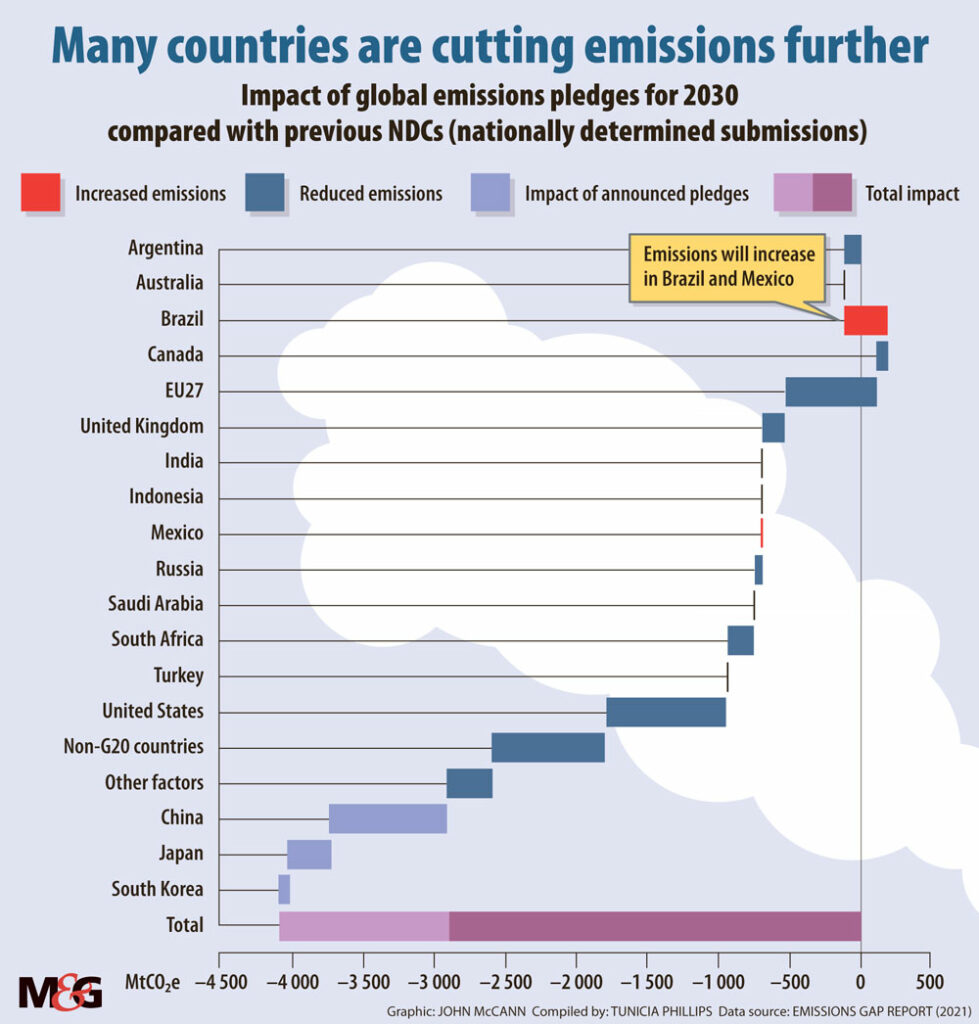Hot air: COP26 is believed to be the world’s best last chance to get runaway climate change under control. (Kevin Frayer/Getty Images)
Another United Nations analysis of where parties to the global climate change accord are in terms of preventing more disaster has again found that they are failing.
“Less than one week before COP26 in Glasgow, we are still on track for a climate catastrophe even with the last announcements that were made,” secretary general António Guterres said.
A slew of climate commitments are being put before the United Nations ahead of the Conference of the Parties (COP26) on Sunday, 31 October. The United Kingdom is presiding over this 2021 conference. It said that COP26 is believed to be the world’s best last chance to get runaway climate change under control.
It is all part of an international effort to stop changes to the weather, sea levels and nature as a result of human activities, mainly those that release toxic gas into the air. These changes are putting strain on water, crop production and food security.
Gutteres said on Tuesday that climate change is a significant driver of conflict and displacement, leading to increased migration.
To stop it, 192 countries signed an agreement in Paris in 2015 to do their part in reducing greenhouse gas emissions (GHG). Agriculture, household waste at landfill sites, transport and other manufacturing activities are responsible for these emissions. But it is the energy sector that produces the bulk of global emissions, accounting for more than two-thirds of global greenhouse gas emissions.
Scientists have long concluded that it is these emissions that are heating the planet in ways that will be detrimental to the future of humanity and the planet’s ecosystems.
At the same time, climate economic indexes such as that of the Swiss Re Institute predict that the global economy will shrink by 18% in 30 years if no action is taken. In that scenario, the planet warms by 3°C.
Even if countries keep warming to 2°C, the global economy will shed 4% of its value.
The UN Environment Programme’s executive director, Inger Anderson, said on Tuesday that climate change was a problem now and not a future problem. “To stand a chance of limiting global warming to 1.5°C, we have eight years to almost halve greenhouse gas emissions: eight years to make the plans, put in place the policies, implement them and ultimately deliver the cuts. The clock is ticking loudly.”
The UN report points out that the updated targets are geared at 2050 with no clear goals for reductions by the end of this decade.

Gutterres said countries were squandering Covid-19 stimulus and had missed an opportunity to recover sustainably.
“Only about 20% of recovery investments will support the green economy, as we prepare COP26, this is another wake-up call,” he said.
To close this gap the UN report refers to, 28 billion more tonnes of greenhouse gas emissions need to be stopped to avoid warming at a level that would permanently alter the planet for the worse.
“So as the title of this year’s report puts it, the heat is on and as the contents of the report show, the leadership we need is off and far off. We know that humanity’s future depends on keeping global temperature increases to 1.5 degrees Celsius by 2030. And also know that so far, parties to the Paris agreement are utterly failing to keep these targets within reach,” Gutterres said.
The United Framework Convention on Climate Change (UNFCCC) also released a final report on all the new updated commitments to climate action ahead of COP last week.
Tom Evans, of the energy think tank E3G, said there was a worrying gap between where countries are and where they need to be.
“This [UN emissions gap report] complements yesterday’s synthesis report from the UNFCCC, which found that as a result of the latest round of enhancements to 2030 climate targets, projected 2030 emissions are set to be 15.9% higher than 2010 levels.”
The UNFCCC’s executive secretary, Patricia Espinosa, thanked countries for updating their commitments but cautioned it meant that climate action needed to double if the goals of the climate accord were to be met. “Overshooting the temperature goals will lead to a destabilised world and endless suffering, especially among those who have contributed the least to the GHG emissions in the atmosphere. This updated report unfortunately confirms the trend already indicated in the full synthesis report, which is that we are nowhere near where science says we should be.”
Updated information from the 165 latest climate change commitments were studied for the UNFCCC assessment. It includes 116 new or updated commitments communicated by 143 parties as of 12 October 2021, as well as the 86 covered in the September synthesis report.
“The updated report also confirms that for all available nationally determined contributions of all 192 parties taken together, a sizeable increase, of about 16%, in global greenhouse gas emissions in 2030 compared to 2010 is anticipated,” the UNFCCC said on the back of the release.
Espinosa said finance was critical for developing nations to take the ambitious action they had committed to in their submissions. “This underscores that developing countries need financial, technological and capacity-building support to increase their level of ambition, both with respect to reducing emissions, as well as in terms of building resilience to the effects of climate change. The pledge to mobilise US $100 billion annually by 2020 is key for enhancing climate action by developing countries. I call on developed countries to fulfill this pledge in full at COP26.”
Tunicia Phillips is a climate and economic justice reporting fellow, funded by the Open Society Foundation for South Africa